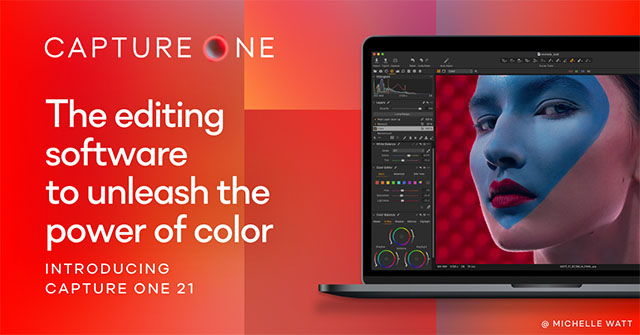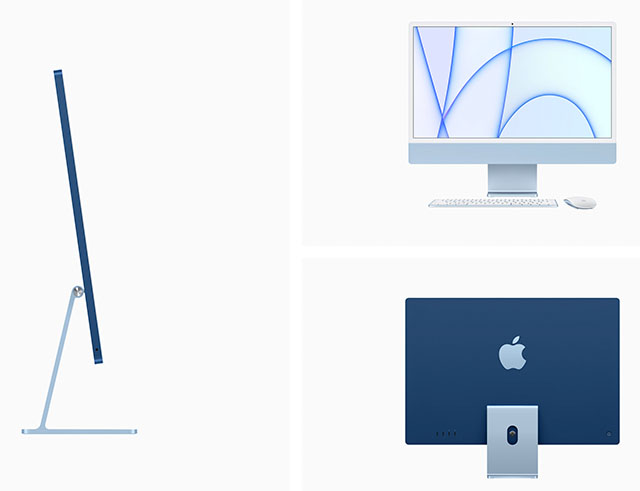Capture One update adds native support for M1-powered Macs
posted Thursday, May 27, 2021 at 3:00 PM EDT

Apple's M1 chip, which powers models in nearly all of Apple's notebook and desktop lineup, plus recent iPad Pro models, is a powerful piece of silicon. It's a significant departure from the Intel architecture that has powered Apple's computers -- and still powers some of Apple's computers -- for years. In some cases, it's relatively straightforward to port software from Intel to Apple Silicon. In other cases, it's an incredibly complicated process. Capture One's impressive R&D team has just finished tackling this issue. A new Capture One 21 update, available today, brings native Apple M1 support to the popular photo editing application.
Getting Capture One 21 running natively on the Apple M1 chip was no easy feat. Capture One went back to the drawing board and rearchitected its software from the ground up. This approach, while intensive, offers numerous benefits. To the end-user, a key advantage of redesigned software is that Capture One runs very quickly on M1 machines. Importing photos with the new Advanced Importer is up to twice as fast. Managing assets in Catalogs and Albums is 50% quicker. Brushing edits using Style Brushes is significantly smoother as well. Cropping and rotating images are twice as fast. To sum it up, the software is simply faster.

Looking forward, digging into the underpinnings of the software allows the Capture One team additional flexibility moving forward. The M1 chip is far from the last chip Apple will produce. Rumors point toward perhaps an 'M2' chip arriving this year in high-powered machines. Capture One is now well-positioned to swiftly evolve alongside Apple silicon swiftlyDavid Grover sat down with Sune Rastad Bahn, Senior Engineer on the Capture One R&D team, to discuss the recent update and offer insight into the development process and what customers can expect with the latest version of Capture One 21 on M1 Mac computers. You can check that talk out below.
'After Apple's announcement it was transitioning the Mac to Apple silicon, we felt that was the best time to completely rearchitect Capture One for the future,' said Capture One CEO Rafael Orta. 'With our typical dedication to the craft, we brought together our deep understanding of photography post-processing, our powerful software and the Mac's beautiful hardware, to deliver speed improvements for users of Capture One 21. And this is just the beginning. We're incredibly excited for how we can continue to optimize Capture One for even greater performance, which will allow us to better serve image creators.'
If you'd like to hear more from Capture One's CEO, Rafael Orta, be sure to check out our interview with him from March. In that interview, we asked Orta about Apple silicon support. At that time, Orta couldn't share precise release plans. Still, he did say, 'We are very dedicated to getting our software to perform the best on the hardware, because it really is an exceptional achievement that Apple made with their own silicon.'

While some other photo editing software has already released Apple M1 support, Capture One did not want to rush the process. Capture One has a complex foundation. The company has been working hard to refine its code over the last few years. Ensuring that not only everything works on a new chipset takes time. Ensuring that code takes advantage of hardware takes longer still. Capture One has been working on M1 support since July 2020, months before Apple's first M1 machines hit store shelves. The work to modernize the code base for non-Intel platforms began earlier than that, in 2018.

Developing the latest version of Capture One with M1 support was tackled as part of a joint effort with Capture One's R&D team and support from Apple. Ultimately, the decision to do a complete rewrite was undertaken. This means that the math operations used for image processing were rewritten. The code that allows you to see an image on your display when you open a RAW file was re-engineered.
While the user will enjoy the benefits of increased speed and performance on M1 Macs, today's update marks far more than a simple revision. There's a lot of work that has gone on behind the scenes that the user will never see, but will feel the impact of, likely for years to come.

To learn more about Capture One 21 and its features, refer to our launch coverage last December. You can also visit Capture One to learn more. If you have yet to try Capture One 21, a free trial is available.